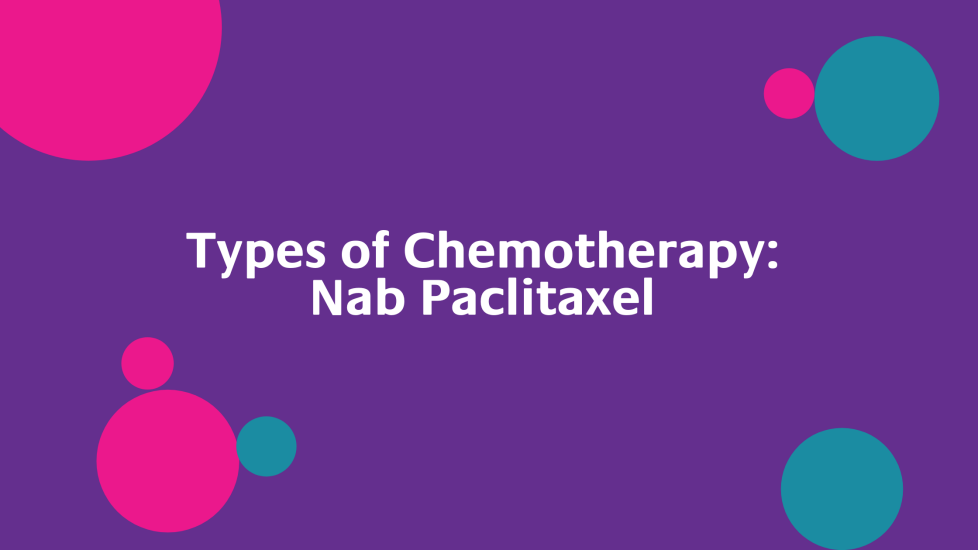10th October 2021 by Claire O'Donnell Education

We are looking at different types of chemotherapy - how you take it and possible side-effects - and then hearing from a patient about their experience. This week it’s Nab Paclitaxel.
What is Nab Paclitaxel (Abraxane)?
Nab Paclitaxel is a chemotherapy drug also known by its brand name, Abraxane. It combines the chemotherapy drug, Paclitaxel, with a protein called Albumin.
It is a treatment for breast cancer that has spread.
It works by stopping cancer cells separating into two new cells, so it blocks the growth of the cancer.
You usually have it if you have had an allergic reaction to paclitaxel.
How do you take it?
You have Nab Paclitaxel as a drip in to your bloodstream (intravenously) which lasts about 30 minutes. You have treatment through a drip in your arm or hand. A nurse puts a small tube (cannula) into one of your veins and connects the drip to it.
You may have treatment every 3 weeks or you might have it once a week for 3 weeks and then have a rest from treatment for a week.
You have blood tests before and during your treatment. They check your levels of blood cells and other substances in the blood. They also check how well your liver and kidneys are working.
What are the side effects?
Side effects can include some of the following:
Please always consult your medical team if you experience any of these side effects.